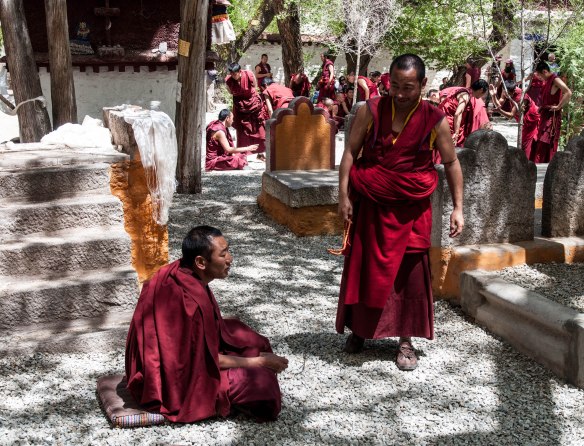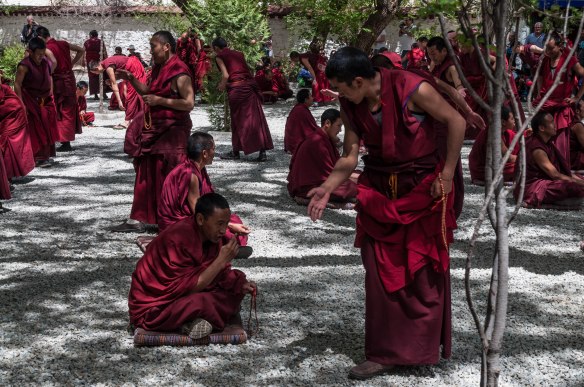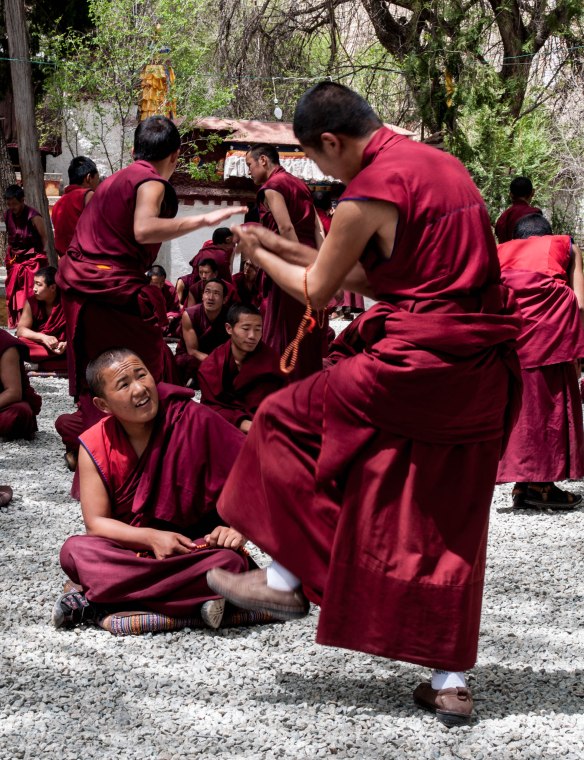
Tibetan scriptures in the Sera Monastery, Lhasa
For most of Tibet’s history, monasteries have been the center of society. There were not only religious and political centers but were also schools. Anyone who was literate was educated in a monastery. It is no surprise then that the monasteries housed the libraries of Tibet. In fact, even today in Tibet and other Tibetan areas of China, those who who can read and write Tibetan were most likely educated in a monastery as written Tibetan is usually not taught in regular government schools.
These libraries not only housed printed books, but also the metal plates, and woodblocks used to print books. The Sera Monastery outside Lhasa still uses these ancient plates to print the scriptures used in monasteries today.

Library of plates in the Sera Monastery
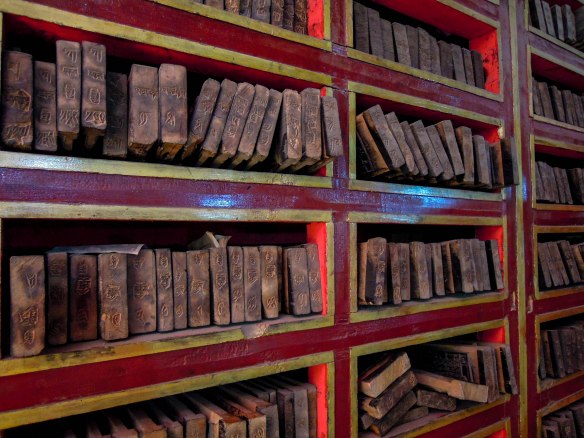
The metal plates are framed in wood

Rows and rows of plates, floor to ceiling
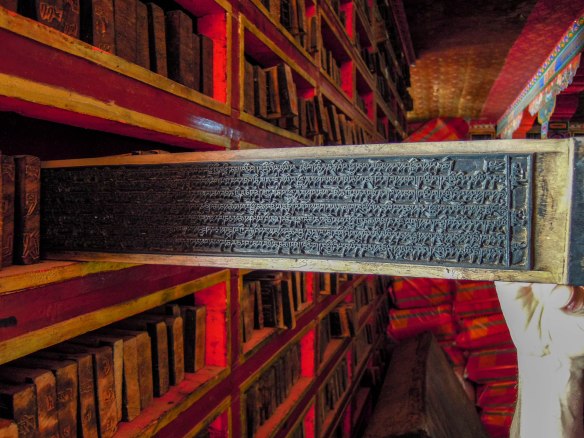
A typical plate
These particular plates are used to print loose-leaf scriptures that are commonly used in monasteries. They consist of long strips of paper with text written the long ways across the page. Below is a poor quality photo of these books for sale, under a glass case.

Completed scriptures ready for sale
Typically a senior monk will recite scriptures using these long loose-leaf texts, and young monks in training will chant them after him. The photos below are from the Pachu Monastery (built in 1418) in Gyantse. They are not that great as the room was very dark. The senior monk sat cross-legged on an elevated stand with the scriptures open in front of him. A group of six young monks, between the ages of 14 and 18 years old, would chant the lines after him. They did not have scriptures in front of them; they had to rely on listening and repeating what they heard. They were a lively bunch of boys. When they took a break, I had a nice time chatting with them.
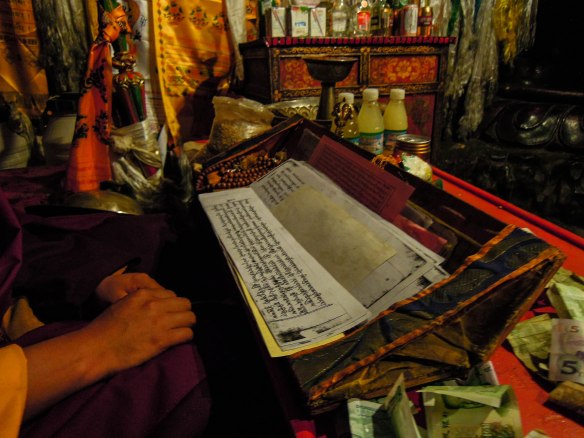
Senior monk reciting scriptures

Young monks taking a break from chanting scriptures
The printing room in the Sera Monastery also produced bound books of Tibetan scripture, history, science and other books. They were for sale right there in the printing room.
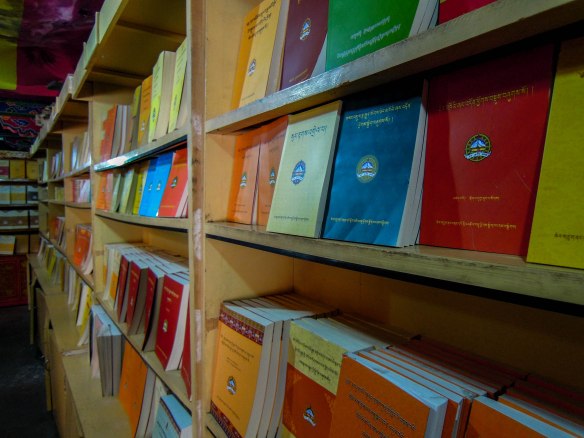
Tibetan books for sale at the Sera Monastery
In nearly all the main prayer halls of the monasteries I visited, Tibetan scriptures in bound books were placed at each monk’s station. They were usually well worn.

Well worn book of scripture on top of monk’s robes
Most monasteries have libraries of printed books wrapped in silk fabric and stacked on wooden shelves. These books were usually not behind glass or anything and anyone could reach out and touch them.
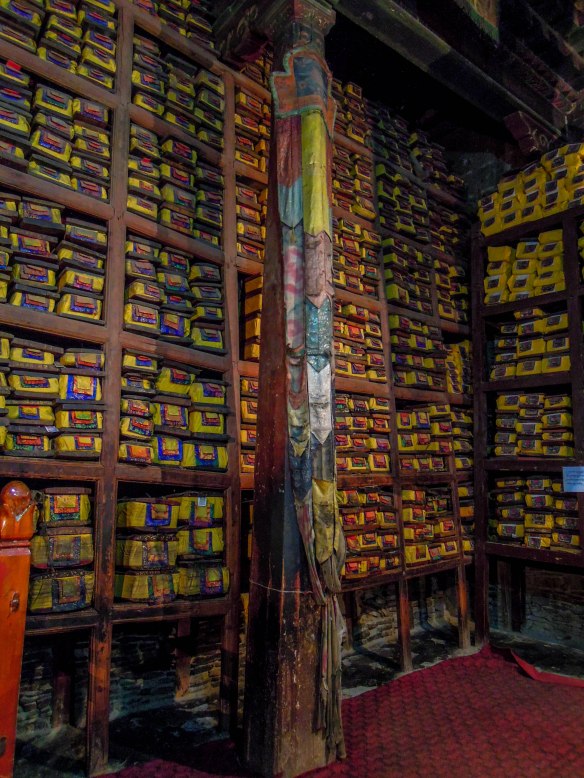
A large collection of books in the Pachu Monastery
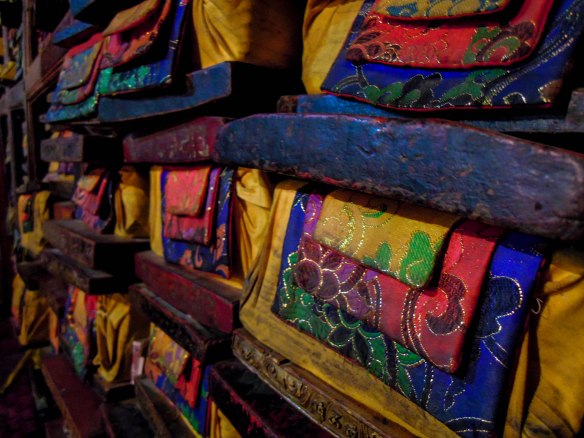
Close up of the books wrapped in silk
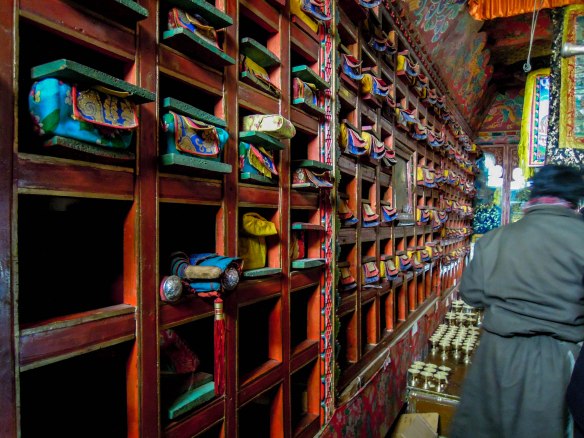
The library at the small Chiu Gompa Monastery in Western Tibet
As a bibliophile I was fascinated with these collections of books. Being so close to them was a great thrill, even though, out to respect, we did not handle them. Unfortunately I do not read Tibetan, but I still found myself wanting to acquire some of these beautiful books. At a street stall near Barkor Square in Lhasa I found a woman selling the long loose-leaf scriptures. I bought a volume from her wrapped and tied in a saffron cloth. I had no way of knowing what I was buying so I asked her to pick a popular volume for me. She said it dealt with health.
I cringe to think how many libraries and books were destroyed during the tumultuous Cultural Revolution. It is not like you can easily replace them. I know that many of the original plates were hidden during this time, so that books that were destroyed could be reprinted.
When I was doing some linguistic research in Yunnan Province (2010) and Tibet (2012), I learned that many Tibetans could not read or write Tibetan. In most government schools, Tibetan may be used as the medium of instruction, but they are not taught how to read and write Tibetan; they are taught how to read and write Chinese. Those who were literate in Tibetan were most likely trained in a monastery school. In the past, before the Chinese occupation of Tibet in 1953, it was the practice for families that had more than one son, to send one of them to the local monastery to be educated. Many of these boys stayed and became monks. The literary tradition in Tibet was closely tied to religion and monasteries. Today it is mostly monks and nuns that can read and write Tibetan, though in some areas others are attempting to learn written Tibetan as well. However, this can be dangerous as these kinds of schools are frowned upon by the Chinese.
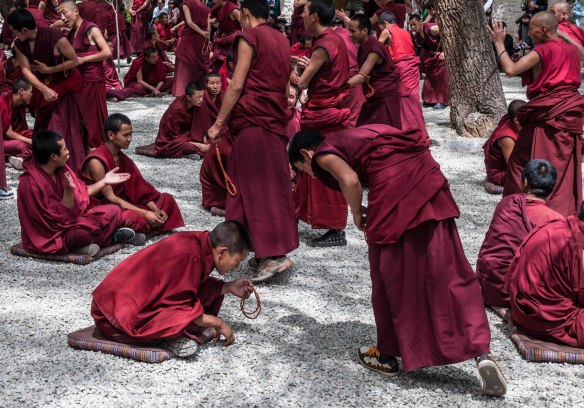 The debates are held each day. Though it seems pretty entertaining to the visitor, it is serious business and an important part of the training of these monks. Tibetan Buddhist monks are never without their prayer beads. In fact, most lay people in Tibet also carry prayer beads.
The debates are held each day. Though it seems pretty entertaining to the visitor, it is serious business and an important part of the training of these monks. Tibetan Buddhist monks are never without their prayer beads. In fact, most lay people in Tibet also carry prayer beads.
